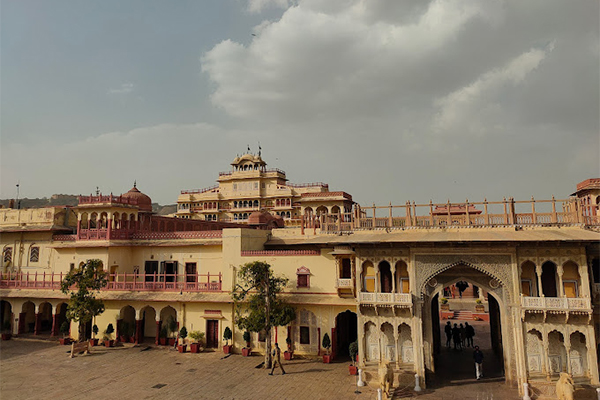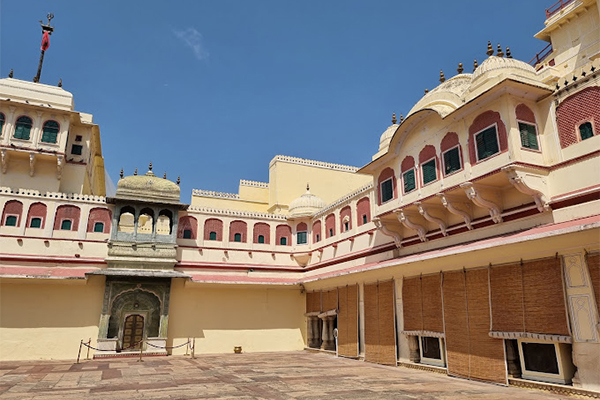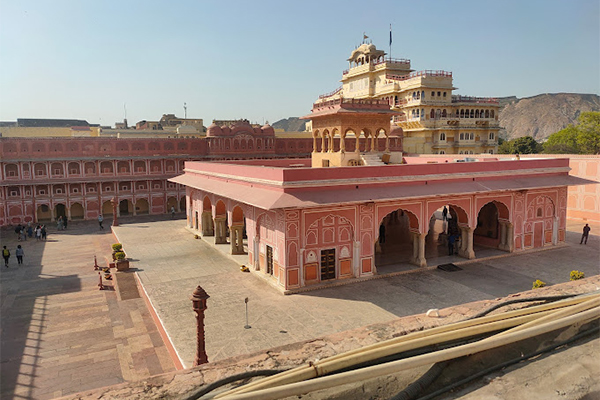A Glimpse into History:
The City Palace, constructed in the early 18th century by Maharaja Sawai Jai Singh II, is a living testament to the royal heritage of Rajasthan. The palace served as the seat of the Jaipur royal family, a lineage known for their patronage of art, culture, and craftsmanship.

Architectural Marvels:
The palace’s architecture seamlessly blends Mughal, Rajput, and European styles, resulting in a symphony of domes, arches, and courtyards. Here are some architectural highlights to marvel at:
Mubarak Mahal: This elegant palace within the palace was built to welcome dignitaries. Its intricate detailing and ornate facades are a sight to behold.
Chandra Mahal: Housing the royal family, this seven-story structure offers a glimpse into their opulent lifestyle. Each floor has a unique name and purpose, like Sukh Niwas and Ranga Mandir.
Diwan-i-Khas: The Hall of Private Audience, adorned with crystal chandeliers and mirrored walls, exudes luxury.


Artistic Treasures:
The City Palace showcases a remarkable collection of art and artifacts, providing a fascinating insight into the heritage of Rajasthan.
Textile Gallery: Admire a breathtaking collection of royal garments, including intricately embroidered saris and turbans.
Armory Gallery: Discover an array of ancient weapons, showcasing the martial prowess of the Rajputs.
Art Gallery: Marvel at exquisite miniature paintings that depict scenes from mythology and royal life.
Courtyards and Gardens:
The City Palace boasts several courtyards and gardens, offering a serene escape from the hustle and bustle of the city.
Mubarak Mahal Courtyard: A tranquil oasis surrounded by stunning architecture, perfect for a leisurely stroll.
Peacock Courtyard: Named after its peacock gate, this courtyard is a visual delight with its vibrant colors and intricate designs.
Sarvato Bhadra: A garden adorned with fountains, lush greenery, and a charming pavilion, offering a serene retreat.
The Royal Observatory:
Jantar Mantar: Adjacent to The City Palace lies the Jantar Mantar, an awe-inspiring astronomical observatory built by Maharaja Sawai Jai Singh II. This UNESCO World Heritage site is a masterpiece of ancient Indian science and architecture, with colossal sundials and instruments used for celestial observations.
Exquisite Shopping:
Before leaving, don’t forget to explore the Palace’s shopping area, where you can find exquisite Rajasthani handicrafts, textiles, and jewelry. It’s the perfect place to take home a piece of Jaipur’s rich culture.
